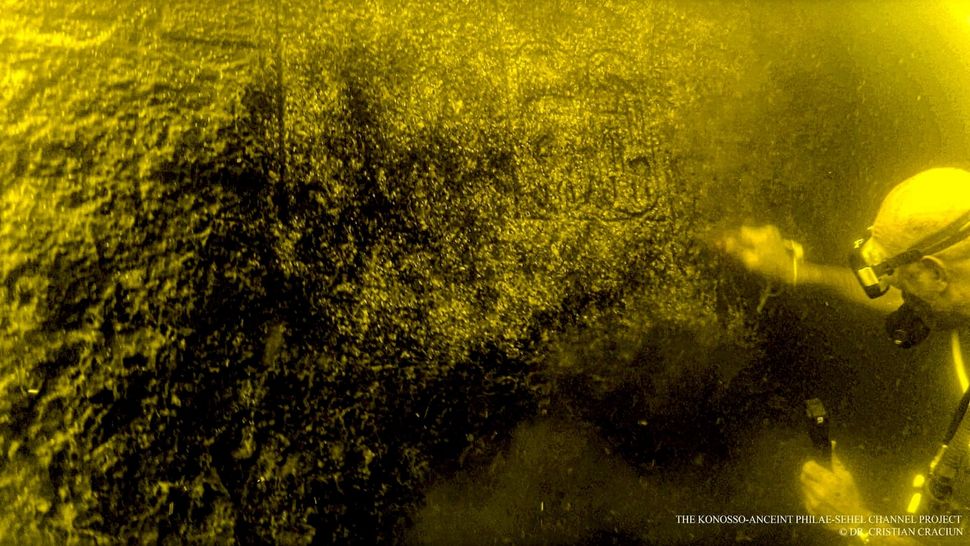Rock carvings of ancient Egyptian pharaohs found underwater near Aswan
By Owen Jarus published 2 days ago
Archaeologists discovered rock carvings featuring several pharaohs during an underwater expedition near Aswan, Egypt.

Archaeologists found stone carvings from ancient times during a diving expedition near Aswan, Egypt. (Image credit: Courtesy of the Egyptian Ministry of Tourism and Antiquities)
During a diving expedition in the Nile River, archaeologists in Egypt discovered rock carvings featuring depictions of several ancient Egyptian pharaohs, along with hieroglyphic inscriptions.
A joint French-Egyptian team found the carvings underwater south of Aswan in an area that was flooded when the Aswan High Dam was built between 1960 and 1970. Prior to the flooding, there was a large effort led by UNESCO to record and move as many archaeological remains as possible from the area. However, many artifacts could not be relocated in time and were soon submerged by the construction project.
Aswan was important for the ancient Egyptians because at times it was near the country's southern border and a number of important temples are located nearby. These include Abu Simbel, a site that has four colossal statues of Ramesses II (lived 1303 to 1213 B.C.) each about 69 feet (21 meters) tall. Aswan is also home to the Philae temple complex, where the last Egyptian hieroglyphic inscription was written in A.D. 394.
The team's work aims to identify and record surviving inscriptions and carvings that are now underwater, the Egyptian Ministry of Tourism and Antiquities said in a translated statement. To do that, team members are diving down to the remains and recording them using photography, video and photogrammetry, a technique that involves taking dozens of photos of an object that can later be used to create a digital 3D model of it.
More:
https://www.livescience.com/archaeology/ancient-egyptians/rock-carvings-of-ancient-egyptian-pharaohs-found-underwater-near-aswan
